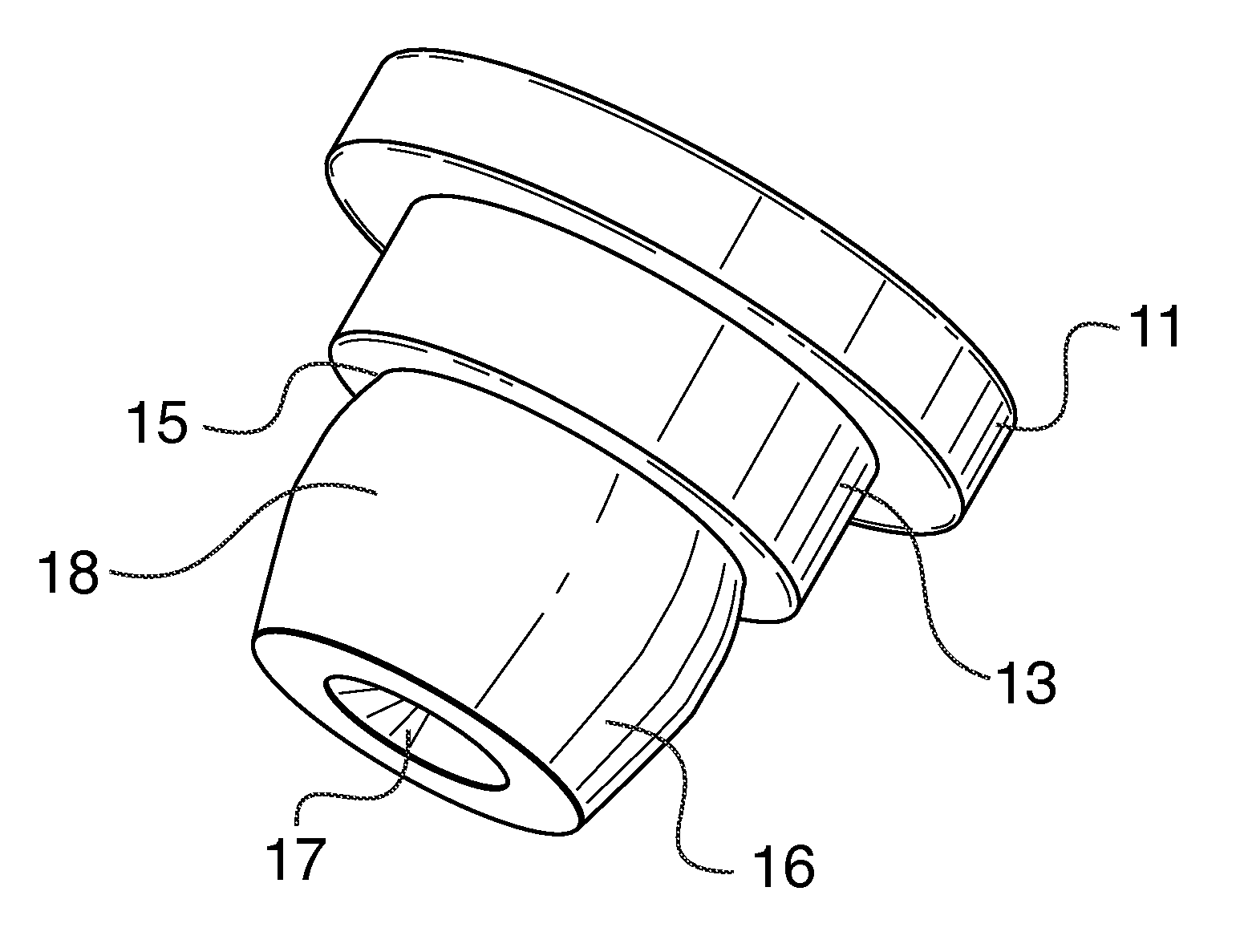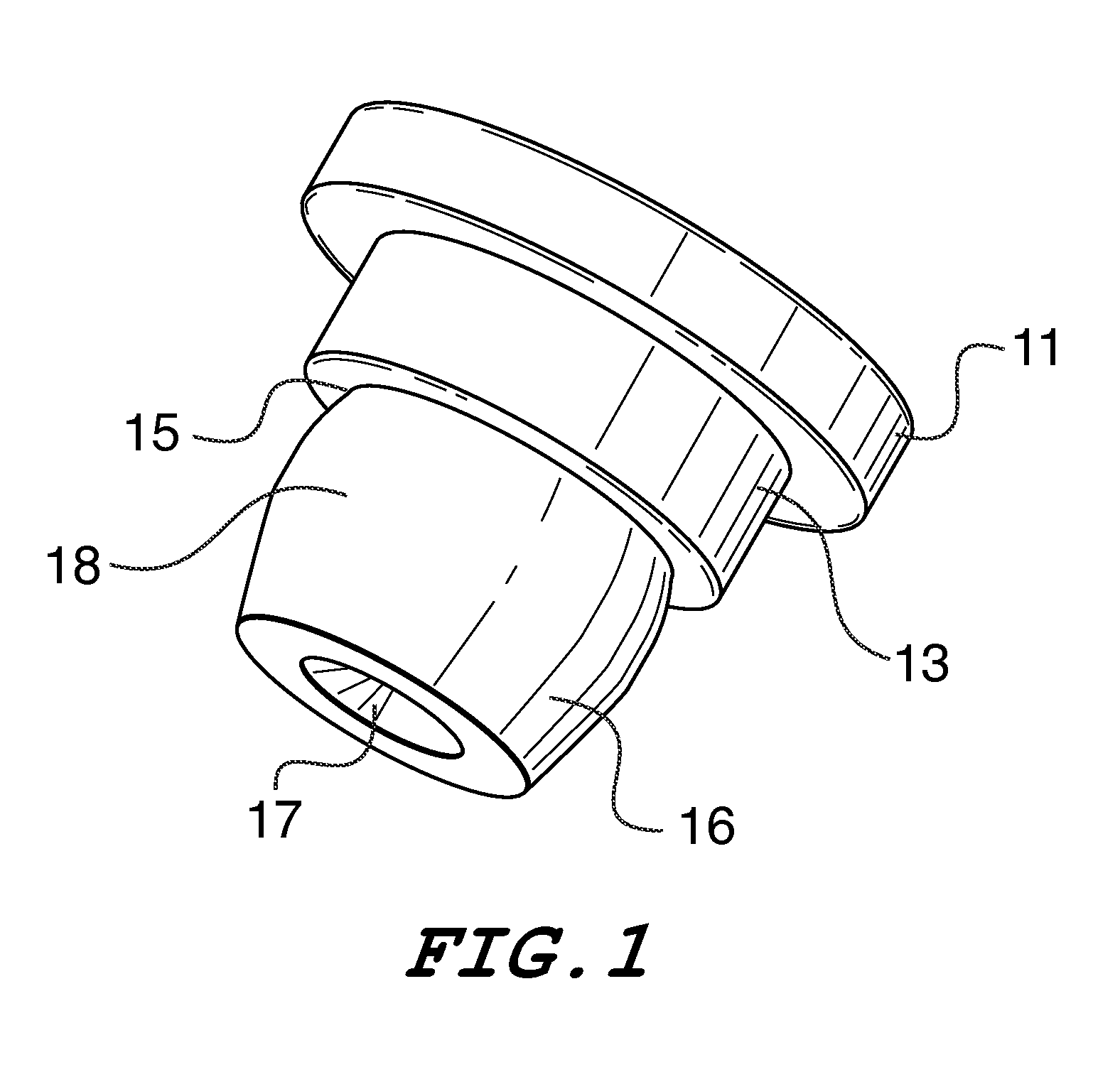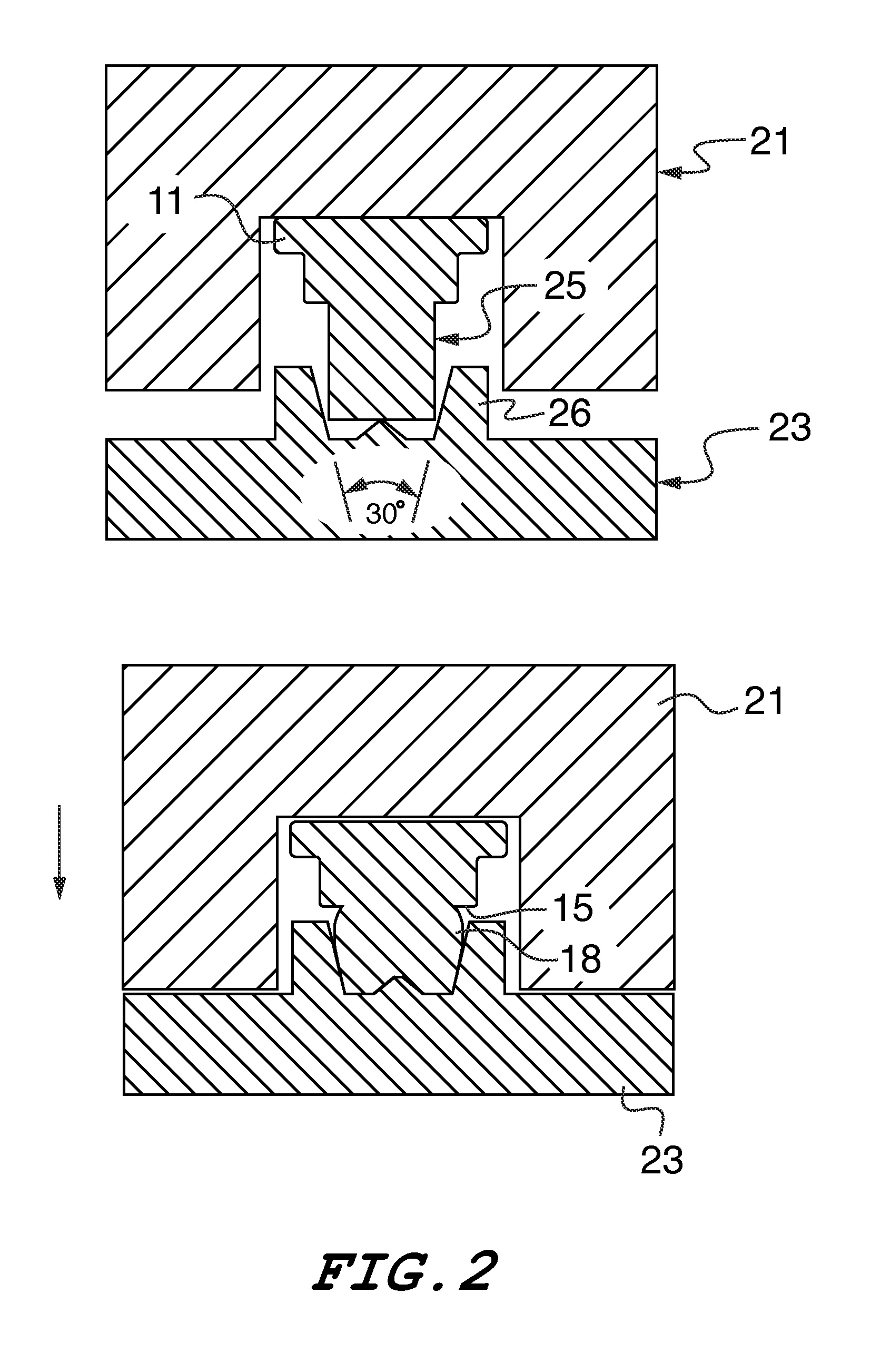Clinch pin fastener
a technology of clinch pins and fasteners, which is applied in the direction of threaded fasteners, screwed fasteners, manufacturing tools, etc., can solve the problems of additional cleaning costs of parts, and achieve the effects of reducing secondary formation operations, tight tolerances, and small clinching features
- Summary
- Abstract
- Description
- Claims
- Application Information
AI Technical Summary
Benefits of technology
Problems solved by technology
Method used
Image
Examples
Embodiment Construction
[0013]Referring now to FIG. 1, the present clinching pin is a forged metal part having a head 11, a displacer shoulder 13 and an undercut 15 that receives a cold flow of metal from the plate into which the part is pressed. It further includes a tapered tip 16 and a circumferential interference band 18 along the greatest diameter of its barrel-shaped shank. A recess 17 is present in the bottom end. As will be described further below, all features of this pin are created in one forming operation. Typically, this part is used to hold two sheets of material together. A top panel can be captivated beneath the head of the pin while the body of the pin is clinched into the bottom plate.
[0014]Referring now to FIG. 2, the present fastener is formed using well known cold forging equipment which includes a top die 21 and a bottom die 23 as shown. The head and displacer are formed first as in any heading operation for the creation of a standard bolt or screw. As shown in this figure, the body o...
PUM
| Property | Measurement | Unit |
|---|---|---|
| height | aaaaa | aaaaa |
| surface angle | aaaaa | aaaaa |
| included angle | aaaaa | aaaaa |
Abstract
Description
Claims
Application Information
 Login to View More
Login to View More - R&D
- Intellectual Property
- Life Sciences
- Materials
- Tech Scout
- Unparalleled Data Quality
- Higher Quality Content
- 60% Fewer Hallucinations
Browse by: Latest US Patents, China's latest patents, Technical Efficacy Thesaurus, Application Domain, Technology Topic, Popular Technical Reports.
© 2025 PatSnap. All rights reserved.Legal|Privacy policy|Modern Slavery Act Transparency Statement|Sitemap|About US| Contact US: help@patsnap.com



